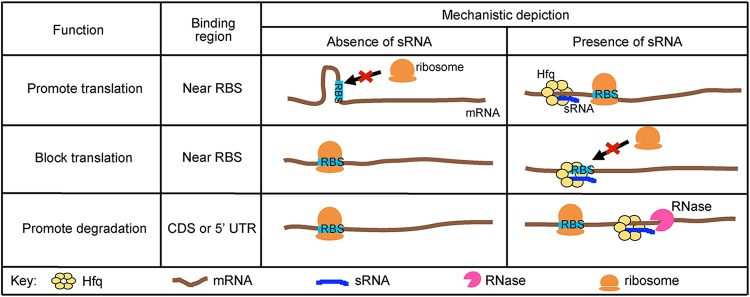FIG 2.
Canonical mechanisms of posttranscriptional regulation by trans-acting sRNAs. mRNAs can have secondary structures that occlude the ribosome binding site (RBS). With the help of the RNA chaperone Hfq, a small RNA (sRNA) promotes translation by binding to the target mRNA, thereby relieving secondary structures that may occlude the RBS. Alternatively, an mRNA may be efficiently translated in the absence of an sRNA, but the presence of an sRNA can inhibit translation by binding to or near the RBS and blocking ribosome access. Furthermore, an sRNA may promote degradation by recruiting RNases to the target mRNA.

